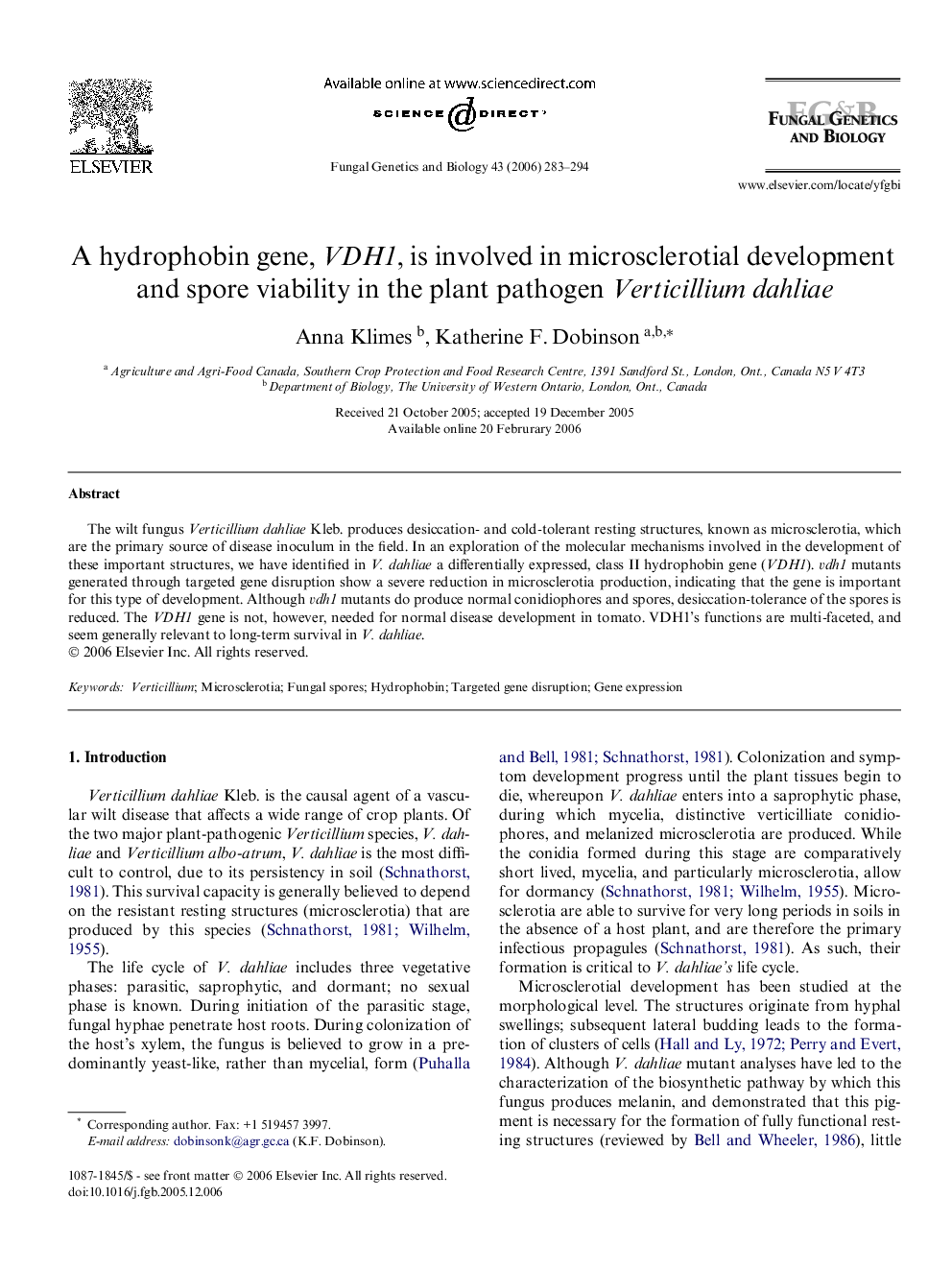| Article ID | Journal | Published Year | Pages | File Type |
|---|---|---|---|---|
| 2181506 | Fungal Genetics and Biology | 2006 | 12 Pages |
The wilt fungus Verticillium dahliae Kleb. produces desiccation- and cold-tolerant resting structures, known as microsclerotia, which are the primary source of disease inoculum in the field. In an exploration of the molecular mechanisms involved in the development of these important structures, we have identified in V. dahliae a differentially expressed, class II hydrophobin gene (VDH1). vdh1 mutants generated through targeted gene disruption show a severe reduction in microsclerotia production, indicating that the gene is important for this type of development. Although vdh1 mutants do produce normal conidiophores and spores, desiccation-tolerance of the spores is reduced. The VDH1 gene is not, however, needed for normal disease development in tomato. VDH1’s functions are multi-faceted, and seem generally relevant to long-term survival in V. dahliae.
